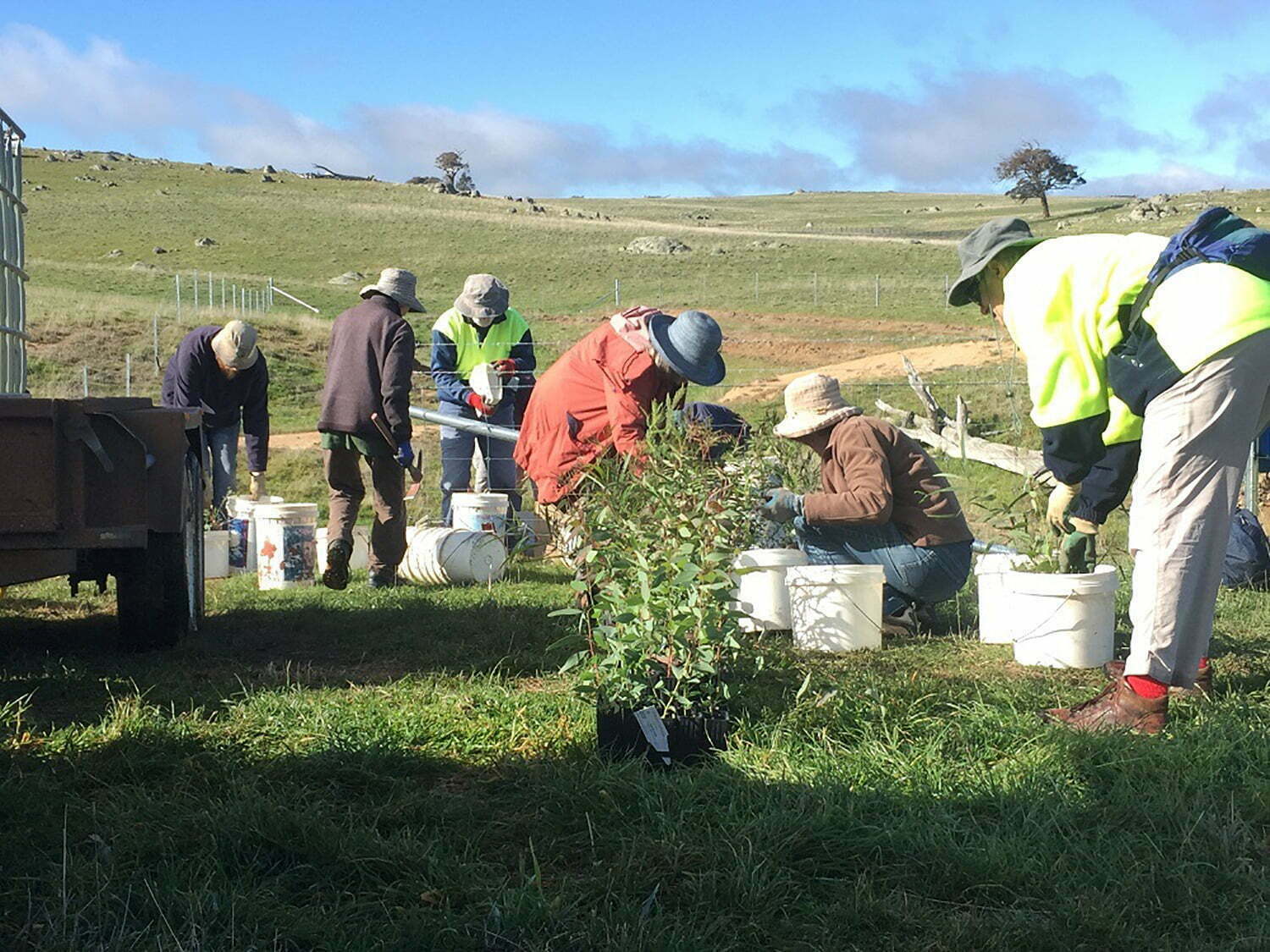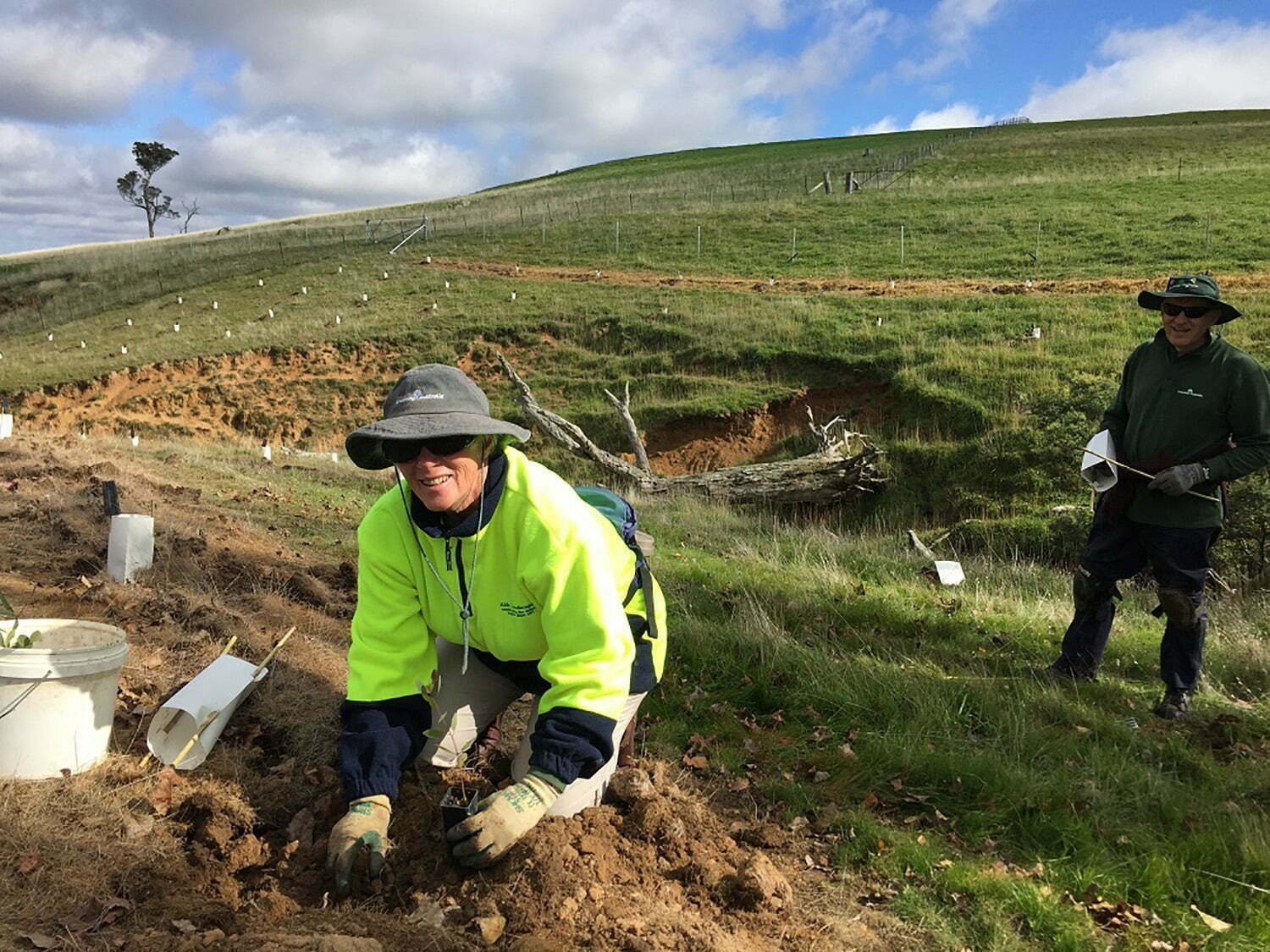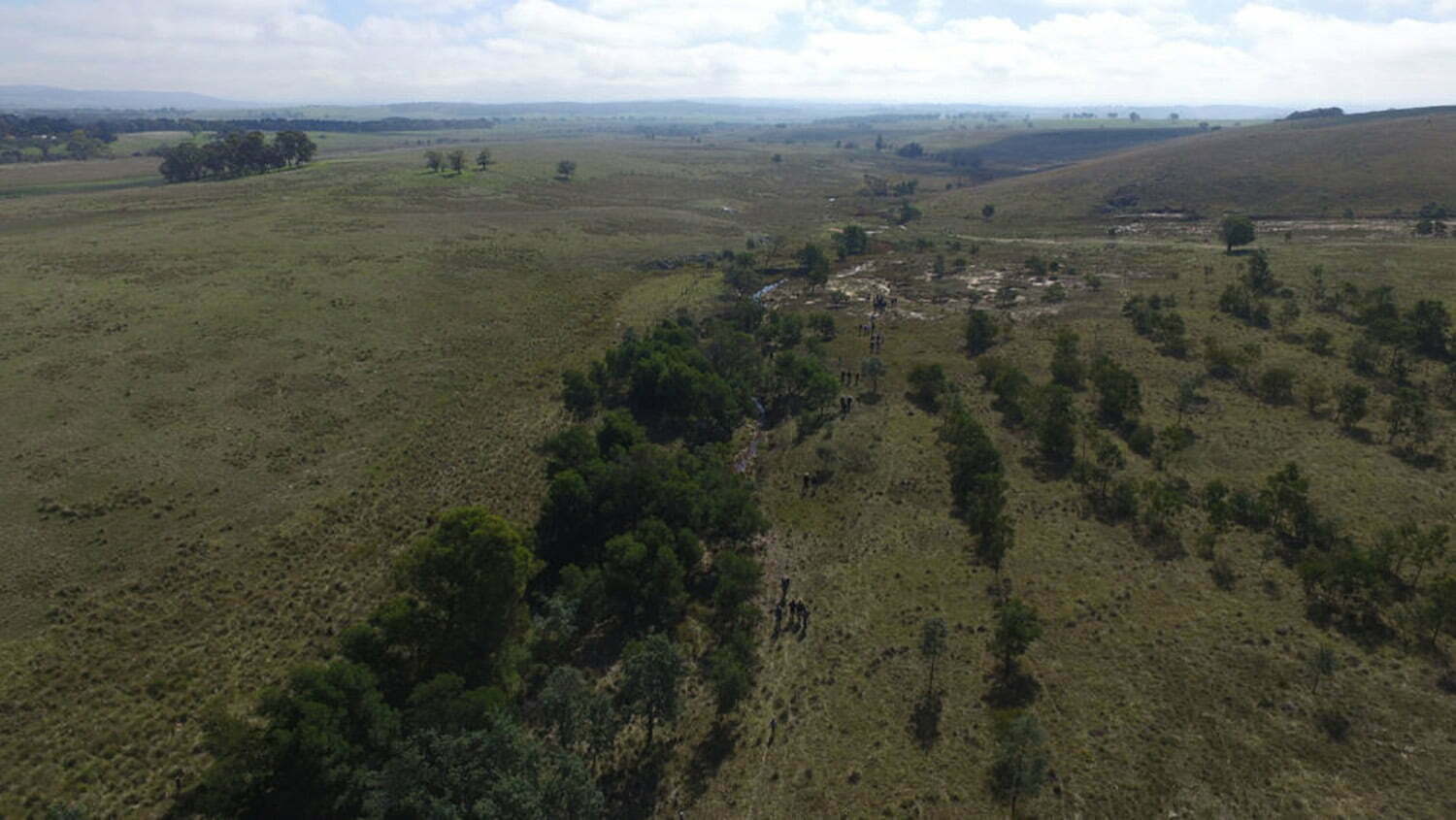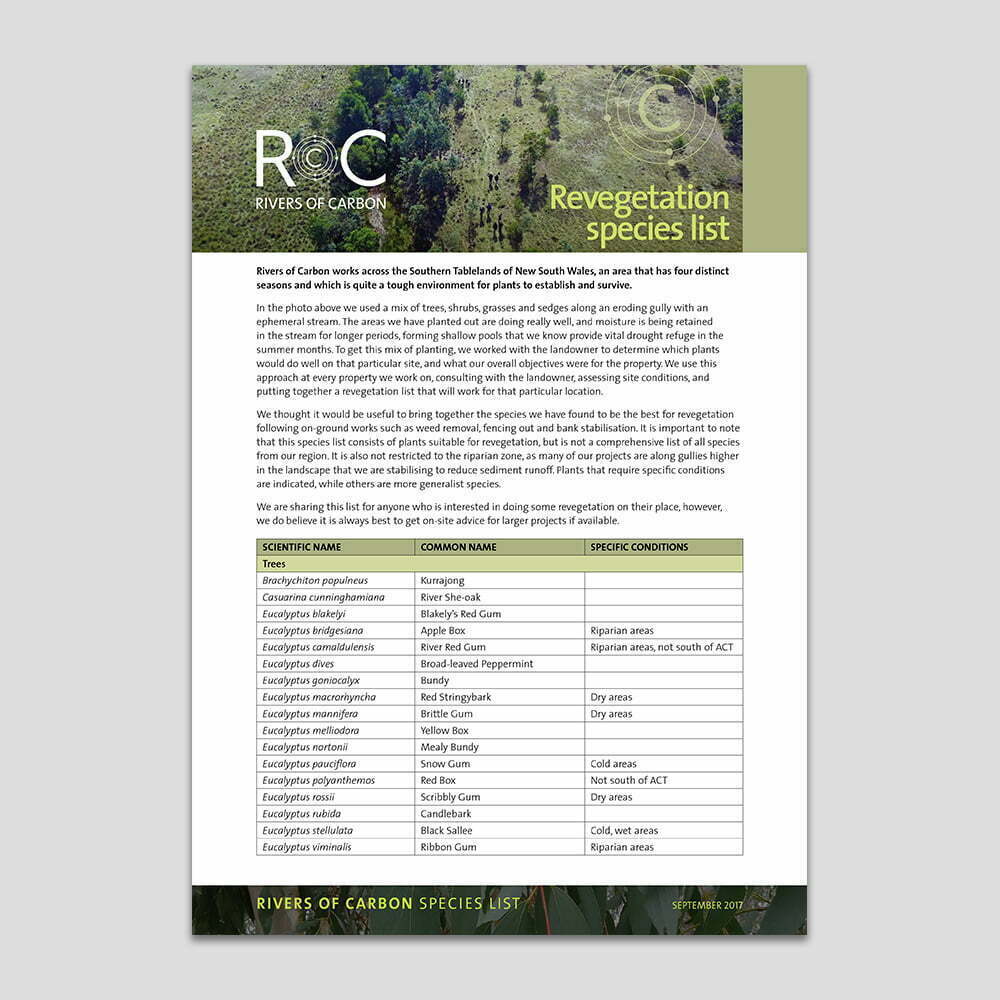“Anyone who plants a tree, plants hope”
– modified from Lucy Larcom
Rivers of Carbon works across the Southern Tablelands of New South Wales, an area that has four distinct seasons and which is quite a tough environment for plants to establish and survive. In the photo above we have used a mix of trees, shrubs, grasses and sedges along an eroding gully with an ephemeral stream. The areas we have planted out are doing really well, and moisture is being retained in the stream for longer periods, forming shallow pools that we know provide vital drought refuge in the summer months. To get this mix of planting, we worked with the landowner to determine which plants would do well on that particular site, and what our overall objectives were for the property. We use this approach at every property we work on, consulting with the landowner, assessing site conditions, and putting together a revegetation list that will work for that particular location.
We thought it would be useful to bring together the species we have found to be the best for revegetating following on-ground works such as weed removal, fencing out and bank stabilisation. It is important to note that this species list consists of plants suitable for revegetation, and is not a comprehensive list of all species from our region. It is also not restricted to the riparian zone, as many of our projects are along gullies higher in the landscape that we are stabilising to reduce sediment runoff. Plants that require specific conditions are indicated, while others are more generalist species.
| Scientific Name | Common Name | Notes |
| Trees | ||
| Brachychiton populenus | Kurrajong | |
| Casuarina cunninghamiana | River She-oak | |
| Eucalyptus blakelyi | Blakelys Red Gum | |
| Eucalyptus bridgesiana | Apple Box | Riparian areas |
| Eucalyptus camaldulensis | River Red Gum | Riparian areas, not south of ACT |
| Eucalyptus dives | Broad-leaved Peppermint | |
| Eucalyptus goniocalyx | Bundy | |
| Eucalyptus macrorhyncha | Red Stringybark | Dry areas |
| Eucalyptus mannifera | Brittle Gum | Dry areas |
| Eucalyptus melliodora | Yellow Box | |
| Eucalyptus nortonii | Mealy Bundy | |
| Eucalyptus pauciflora | Snow Gum | Cold areas |
| Eucalyptus polyanthemos | Red Box | Not south of ACT |
| Eucalyptus rossii | Scribbly Gum | Dry areas |
| Eucalyptus rubida | Candlebark | |
| Eucalyptus stellulata | Black Sallee | Cold, wet areas |
| Eucalyptus viminalis | Ribbon Gum | Riparian areas |
| Shrubs | ||
| Acacia dealbata | Silver Wattle | |
| Acacia genistifolia | Spreading Wattle | Dry areas |
| Acacia implexa | Lightwood | |
| Acacia melanoxylon | Blackwood | Wet areas |
| Acacia rubida | Red-stem Wattle | |
| Bursaria spinosa | Sweet Bursaria | Dry areas |
| Callistemon sieberi | River Bottlebrush | Wet areas |
| Cassinia longifolia | Sticky Cassinia | |
| Daviesia leptophylla | Narrow Bitter Pea | |
| Daviesia mimosoides | Bitter Pea | |
| Hardenbergia violacea | Purple Coral Pea | |
| Hibbertia obtusifolia | Guinea Flower | |
| Indigofera australis | Austral Indigo | |
| Leptospermum continentale | Prickly Tea-tree | |
| Leptospermum lanigerum | Woolly Tea-tree | |
| Leptospermum obovatum | River Tea-tree | Riparian areas |
| Grasses, forbs and sedges | ||
| Carex appressa | Tall Sedge | Riparian areas |
| Chrysocephalum apiculatum | Common Everlasting | |
| Chrysocephalum semipapposum | Clustered Everlasting | |
| Lomandra filiformis | Wattle Mat-rush | |
| Lomandra longifolia | Spiny-headed Mat-rush | |
| Microlaena stipoides | Weeping Grass | |
| Poa labillardieri | River Tussock | Riparian areas |
| Vittadinia muelleri | Narrow-leaved New Holland Daisy | |
| Wahlenbergia spp. | Native Bluebell | |
Rivers of Carbon – Revegetation Species List
Please download and share this list for anyone who is interested in doing some revegetation on their place, however, we do believe it is always best to get on-site advice for larger projects if available.
Happy planting!

Caption: Planting day at on of our Rivers of Carbon Breadalbane sites where we are working with the landholder to fence out stock, protect water courses and revegetate. Photo: Lucy Wenger.


